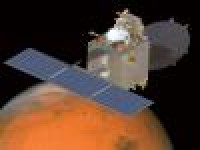Lessons in science popularization from MOM
Will scientific understanding of the planetary system and the universe lead to rational thinking and rejection of superstitions related to so-called impact of planetary movement on our lives?
Dinesh C. Sharma lauds the way ISRO engaged with the media on the Mars Orbiter Mission.

Reprinted from Metro India, 28 September, 2014
Traveling from my home in Mayur Vihar to the studios of the Rajya Sabha Television in New Delhi on the evening of September 24, I struck a conversation with the driver of the car that the channel had sent to fetch me. The driver must have been ferrying guests for television shows on the channel through the day. So he knew that a major news event was probably on. “Mangal par apni machine pahunch gayi kya saab (has our machine reached the Mars)?” he asked me inquisitively. When I answered in affirmative, he asked me how far was the planet from the earth? Was it beyond moon? How much time does it take to reach there? And so on…
The conversation pleasantly surprised me and I realized that, beginning from September 22, the non-stop coverage of the Mars mission along with stories in vernacular newspapers, had indeed percolated down. Inside television studios, panelists like me were struck with curious questions coming from Jammu to Mysore, and from different corners of the country about Mars, astronomy, and science in general.
The interest generated by the Mars Orbiter Mission (MOM) of the Indian Space Research Organisation (ISRO) has indeed been unprecedented in recent times. This was the first space mission to be covered by the electronic media with the same enthusiasm and zeal like a world cup cricket or a general election. It is incredible that RSTV gave non-stop coverage to the event for one full week, calling it “Mars & Beyond: Journey of Science in India”. Through the week, interviews with scientists, documentaries, talk shows, phone-in and studio discussions on different aspects of Indian space programme were featured. The response of people from different cities and those gathered at science centres and planetariums across the country was truly remarkable. In all, the space mission proved to be a great experiment in science communication and science popularization, besides an occasion to gauge public understanding of science. Even if one discounts the usual celebratory and ‘proud’ element resulting media hype, the public response appeared to be genuine and deep.
The first credit for this must go to ISRO, which consciously decided to make MOM a public show of science, and rightly so. This was the first time, the space agency got onto social media platforms in a big way and it became an instant hit with people. When Liquid Motor was test-fired for less than four seconds on September 22, the first confirmation that the test has been conducted came from the official Twitter handle of the space agency: @isro. It announced at 2:03 PM that “#MarsOrbiter engine test firing must have completed. We'll get a confirmation after the communication delay of 12 minutes.” Such instant communication continued for the next three days, till MOM reached its destination in an elliptical orbit around the red planet. ISRO has 29,000 followers on Twitter and over half a million likes for its Facebook page. As soon as the orbiter entered the Martian orbit, it started tweeting from a separate Twitter handle, which garnered lakhs of followers within minutes.
Never before has any scientific agency in the country engaged with people in this way. Hopefully, other publicly-funded scientific research agencies will learn a lesson or two from ISRO in this regard. Regretfully, some of these agencies don’t even have properly functional website at present. A cursory look at the outpouring on social media platforms shows that public engagement on social media has gone beyond just ‘likes’ and ‘shares’. Hundreds of comments pouring in on the Facebook page of ISRO and intelligent questions were being asked by young people, indicating people’s interest in science. Many young people have got inspired and expressed their desire to pursue space science and technology in future. The communication is two-way. Every technical or lay question gets answered on the page by scientists.
Dinesh C. Sharma is a Delhi-based science journalist and author.
Such articles are only possible because of your support. Help the Hoot. The Hoot is an independent initiative of the Media Foundation and requires funds for independent media monitoring. Please support us. Every rupee helps.
Subscribe To The Newsletter






